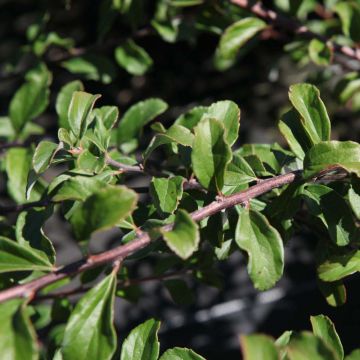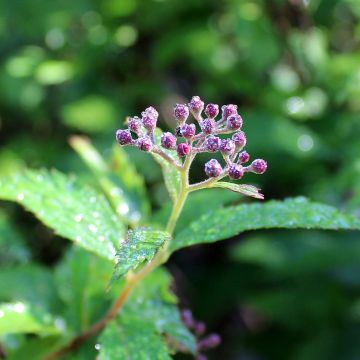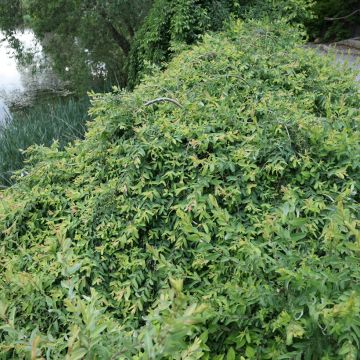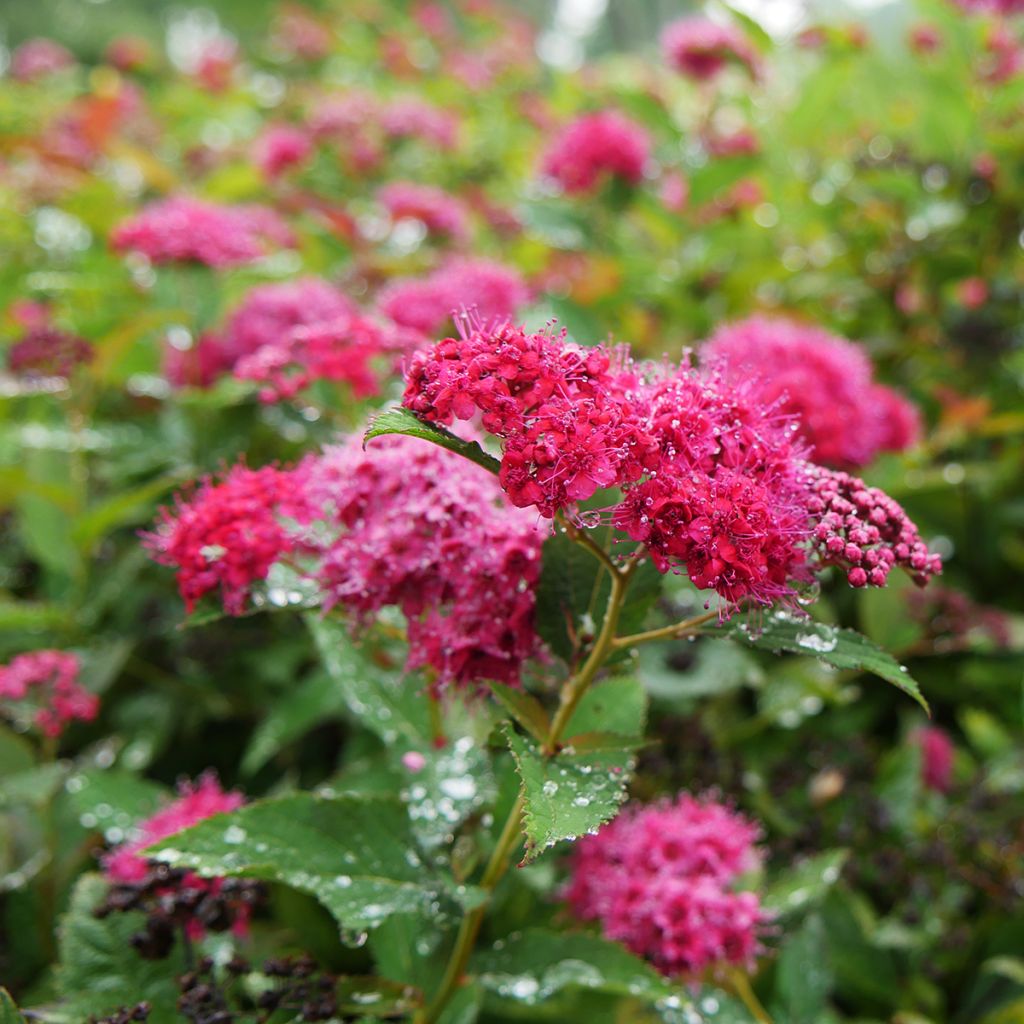

Spiraea japonica Double Play Doozie - Japanese Spirea
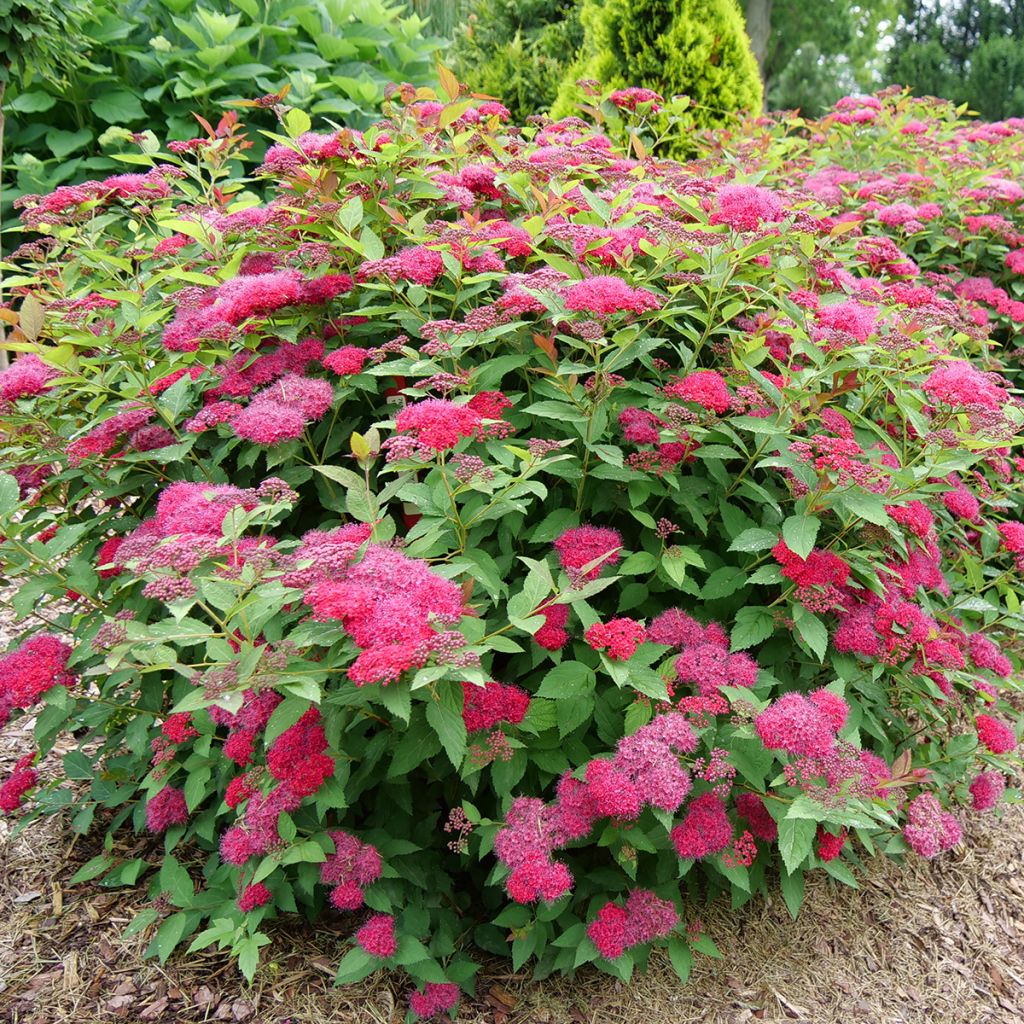

Spiraea japonica Double Play Doozie - Japanese Spirea


Spiraea japonica Double Play Doozie - Japanese Spirea


Spiraea japonica Double Play Doozie - Japanese Spirea
Spiraea japonica Double Play Doozie - Japanese Spirea
Spiraea japonica Double Play® Doozie® Proven Winners®
Japanese Spirea, Japanese Meadowsweet
This plant carries a 24 months recovery warranty
More information
We guarantee the quality of our plants for a full growing cycle, and will replace at our expense any plant that fails to recover under normal climatic and planting conditions.
From €5.90 for pickup delivery and €6.90 for home delivery
Express home delivery from €8.90.
Does this plant fit my garden?
Set up your Plantfit profile →
Description
The Double Play Doozie Japanese Spirea is part of a series of Spiraea japonica selected for their small size and beautifully coloured foliage. With a compact habit, it develops reddish-orange foliage in spring, turning dark green with red shoots in summer. The summer flowering is produced in clusters of dark pink-red flowers. In autumn, the foliage returns to its reddish-orange colour. Low-maintenance and easy to care for, this lovely little bush finds a place in all gardens, even the smallest ones. Its compact and rounded habit makes it ideal for borders or low-growing beds, as well as for container gardening.
The Double Play Doozie Japanese Spirea belongs to the Rosaceae family. It is a cultivar derived from Spirea japonica, a botanical species native to China and Japan. This plant has a fast growth rate and will reach an average size of 70 to 80 cm in all directions. Forming a dense and bushy small shrub with a rounded habit, this variety displays original foliage with refined and changing tones. Tinged with reddish-orange during bud burst, it gradually turns dark green with always red young shoots. It turns red and orange in autumn before falling off. Its small leaves are oblong and have toothed edges. The flowers appear on the current year's growth, from June to July, and again until the end of summer if the faded ones are removed. They are grouped in medium-sized terminal clusters, about 6-8 cm wide, slightly spherical. They are composed of numerous small purple-red flowers. This extended flowering period is also honey-producing and nectar-rich, attracting many butterflies, bees, and bumblebees.
The Double Play Doozie Spirea is a variety that can adapt to various climates and soil types, except for extremely hot or arid conditions. It is suitable for multiple uses: as a low hedge, as a central structure in a perennial bed, or in large borders. This plant also performs well in container gardening on terraces and balconies, with regular water fertiliser applications. Combine Japanese Spirea with white, pink, or mauve roses, shrubby potentillas, Caryopteris, and shrubby salvias. It also fits well as the front row of a country hedge, alongside other varieties such as Spiraea betulifolia, Salix purpurea 'Nana', Miss Kim Dwarf Manchurian Lilac, Buddleia alternifolia 'Unique', and Dwarf Weigela Nana purpurea.
Report an error about the product description
Plant habit
Flowering
Foliage
Botanical data
Spiraea
japonica
Double Play® Doozie® Proven Winners®
Rosaceae
Japanese Spirea, Japanese Meadowsweet
Cultivar or hybrid
Other Spiraea
Planting and care
Plant the Japanese Double Play Doozie Spirea in any well-drained, preferably sunny garden soil that is rather rich and moist. Water well during the first year. Prune in February-March, cutting back to 10 - 15 cm from the ground: this late winter pruning is essential for ensuring a beautiful flowering. Japanese Spiraea are perpetual flowering plants, so to encourage a second bloom, lightly prune the plant or remove faded flowers to promote a late summer, early autumn rebloom. This plant blooms on new shoots. To maintain the vigour of the plant, it is also important to remove old branches at the base in spring. Apply a general fertiliser in March. Plant the specimens with a spacing of 60 cm, preferably in autumn or winter.
Planting period
Intended location
Care
This item has not been reviewed yet - be the first to leave a review about it.
Hedge shrubs
Haven't found what you were looking for?
Hardiness is the lowest winter temperature a plant can endure without suffering serious damage or even dying. However, hardiness is affected by location (a sheltered area, such as a patio), protection (winter cover) and soil type (hardiness is improved by well-drained soil).

Photo Sharing Terms & Conditions
In order to encourage gardeners to interact and share their experiences, Promesse de fleurs offers various media enabling content to be uploaded onto its Site - in particular via the ‘Photo sharing’ module.
The User agrees to refrain from:
- Posting any content that is illegal, prejudicial, insulting, racist, inciteful to hatred, revisionist, contrary to public decency, that infringes on privacy or on the privacy rights of third parties, in particular the publicity rights of persons and goods, intellectual property rights, or the right to privacy.
- Submitting content on behalf of a third party;
- Impersonate the identity of a third party and/or publish any personal information about a third party;
In general, the User undertakes to refrain from any unethical behaviour.
All Content (in particular text, comments, files, images, photos, videos, creative works, etc.), which may be subject to property or intellectual property rights, image or other private rights, shall remain the property of the User, subject to the limited rights granted by the terms of the licence granted by Promesse de fleurs as stated below. Users are at liberty to publish or not to publish such Content on the Site, notably via the ‘Photo Sharing’ facility, and accept that this Content shall be made public and freely accessible, notably on the Internet.
Users further acknowledge, undertake to have ,and guarantee that they hold all necessary rights and permissions to publish such material on the Site, in particular with regard to the legislation in force pertaining to any privacy, property, intellectual property, image, or contractual rights, or rights of any other nature. By publishing such Content on the Site, Users acknowledge accepting full liability as publishers of the Content within the meaning of the law, and grant Promesse de fleurs, free of charge, an inclusive, worldwide licence for the said Content for the entire duration of its publication, including all reproduction, representation, up/downloading, displaying, performing, transmission, and storage rights.
Users also grant permission for their name to be linked to the Content and accept that this link may not always be made available.
By engaging in posting material, Users consent to their Content becoming automatically accessible on the Internet, in particular on other sites and/or blogs and/or web pages of the Promesse de fleurs site, including in particular social pages and the Promesse de fleurs catalogue.
Users may secure the removal of entrusted content free of charge by issuing a simple request via our contact form.
The flowering period indicated on our website applies to countries and regions located in USDA zone 8 (France, the United Kingdom, Ireland, the Netherlands, etc.)
It will vary according to where you live:
- In zones 9 to 10 (Italy, Spain, Greece, etc.), flowering will occur about 2 to 4 weeks earlier.
- In zones 6 to 7 (Germany, Poland, Slovenia, and lower mountainous regions), flowering will be delayed by 2 to 3 weeks.
- In zone 5 (Central Europe, Scandinavia), blooming will be delayed by 3 to 5 weeks.
In temperate climates, pruning of spring-flowering shrubs (forsythia, spireas, etc.) should be done just after flowering.
Pruning of summer-flowering shrubs (Indian Lilac, Perovskia, etc.) can be done in winter or spring.
In cold regions as well as with frost-sensitive plants, avoid pruning too early when severe frosts may still occur.
The planting period indicated on our website applies to countries and regions located in USDA zone 8 (France, United Kingdom, Ireland, Netherlands).
It will vary according to where you live:
- In Mediterranean zones (Marseille, Madrid, Milan, etc.), autumn and winter are the best planting periods.
- In continental zones (Strasbourg, Munich, Vienna, etc.), delay planting by 2 to 3 weeks in spring and bring it forward by 2 to 4 weeks in autumn.
- In mountainous regions (the Alps, Pyrenees, Carpathians, etc.), it is best to plant in late spring (May-June) or late summer (August-September).
The harvesting period indicated on our website applies to countries and regions in USDA zone 8 (France, England, Ireland, the Netherlands).
In colder areas (Scandinavia, Poland, Austria...) fruit and vegetable harvests are likely to be delayed by 3-4 weeks.
In warmer areas (Italy, Spain, Greece, etc.), harvesting will probably take place earlier, depending on weather conditions.
The sowing periods indicated on our website apply to countries and regions within USDA Zone 8 (France, UK, Ireland, Netherlands).
In colder areas (Scandinavia, Poland, Austria...), delay any outdoor sowing by 3-4 weeks, or sow under glass.
In warmer climes (Italy, Spain, Greece, etc.), bring outdoor sowing forward by a few weeks.


































